We built a 700-metre gravel driveway to our future farmhouse. Here’s what it cost, how we planned it, and tips for building a rural driveway.
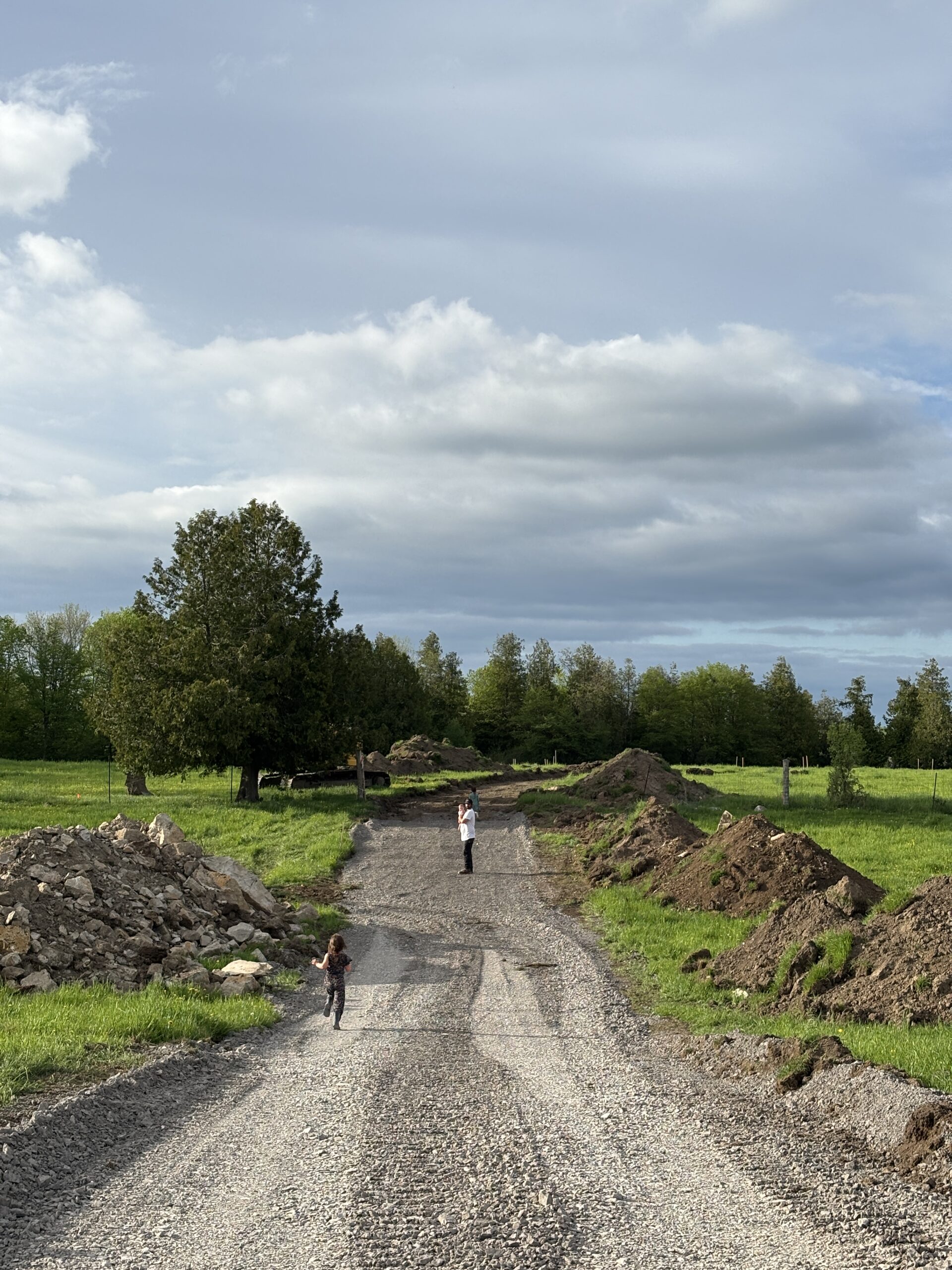
Disclaimer: this post may contain affiliate links, and every purchase made through these links will give me a small commission (at absolutely no extra cost for you!) AS AN AMAZON ASSOCIATE AND REWARDSTYLE MEMBER, I EARN FROM QUALIFYING PURCHASES. See Privacy Policy for additional info.
When we bought our 80-acre property in January 2024, we were chasing more than just land—we were chasing a lifestyle, a future for our family. One rooted in space, stillness, and the kind of freedom only the countryside can offer.
After years of dreaming and planning, we finally took the leap and committed to building our family’s forever farmhouse—tucked far back from the road, surrounded by nature, and designed to grow with us for decades and generations to come.
But before we could even think about framing walls or pouring a foundation, we had to solve a much more practical (and expensive) problem: building a rural driveway to access the building site
In April 2025, we began construction on what would become a 700-metre rural driveway—a winding gravel path stretching from the road all the way to the back of the property where our home will eventually stand. It wasn’t a small job. In fact, it turned out to be one of the biggest and most costly pieces of the early build. But it was absolutely worth it!
It’s not the most glamorous part of building a home in the country, but it’s one of the most essential. This post walks you through why we chose to build such a long driveway, what the process looked like, and the key lessons we learned along the way.
Whether you're building a home on acreage or just curious about what goes into a rural driveway build, I hope our experience helps you feel more prepared and inspired.

Why We Built a 700-Metre Rural Driveway
Our vision for this property was always about privacy, peace, and creating a home that felt tucked away from the rest of the world. We knew from day one that our house would sit way back on the land, surrounded by fields and forest, far from the road.
To make that possible, we needed a long, durable, well-drained driveway to connect our future home to the main road. In April 2025, that project began.
Was it expensive? Absolutely. Was it worth it? Without a doubt.
Driving down that winding gravel lane now, surrounded by trees and open sky, already feels like coming home—even though we haven’t poured the foundation yet!

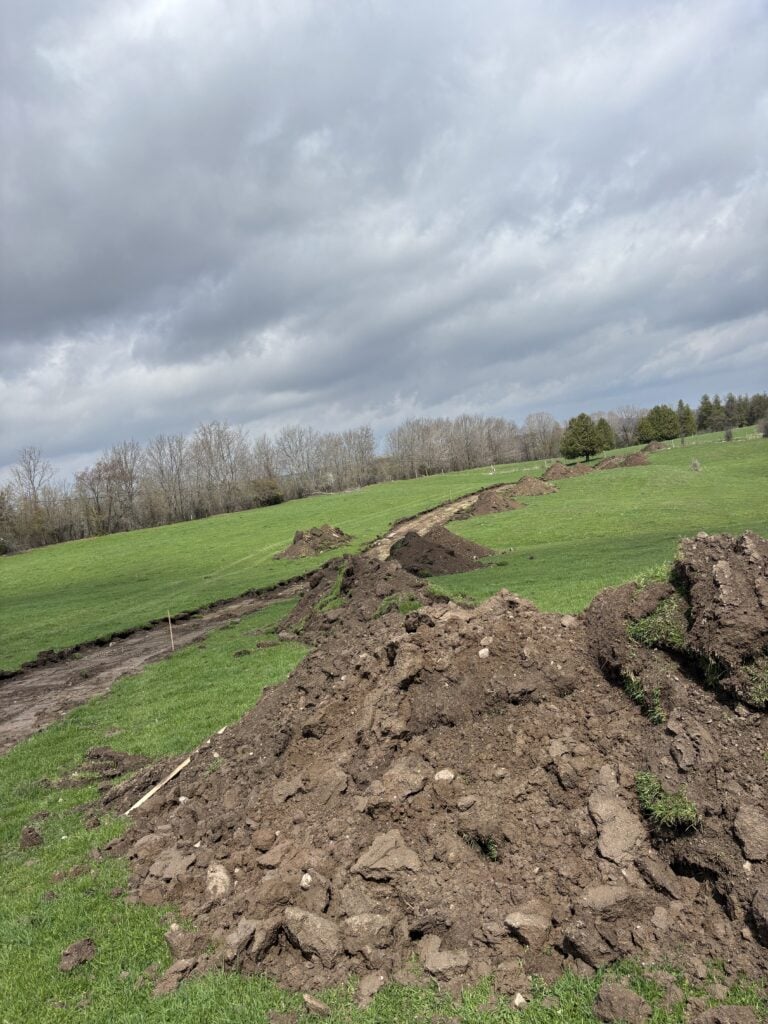
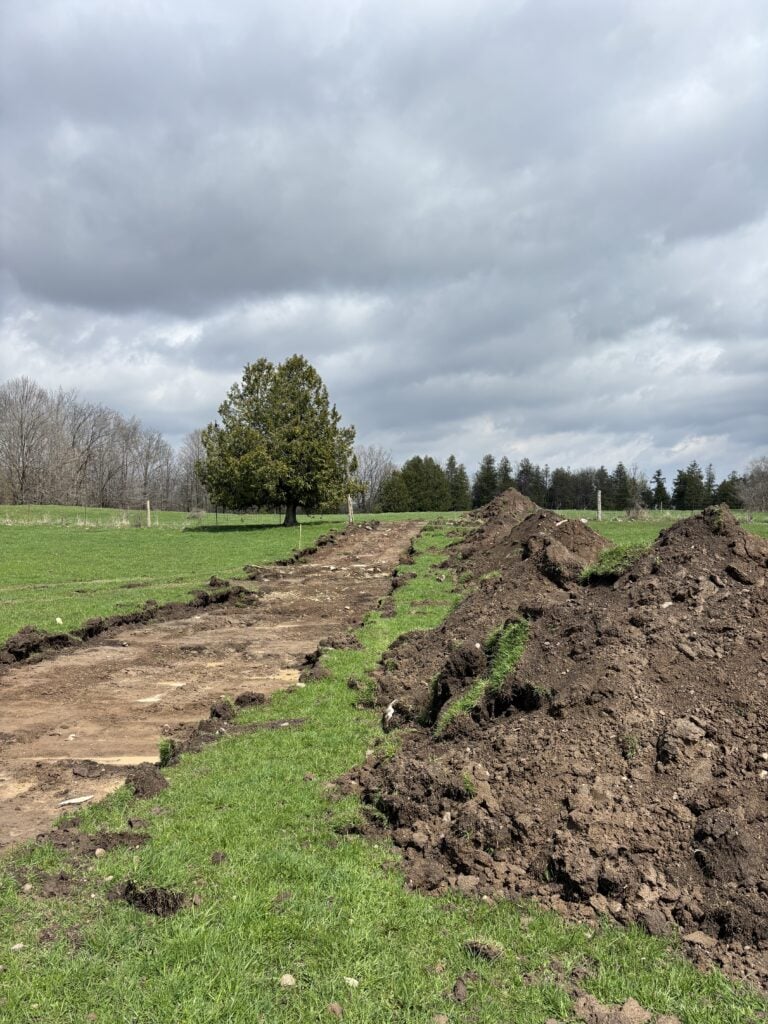


5 Tips for Building a Rural Driveway for Your Rural Home
If you're dreaming of building a rural home or farmhouse, and you’re planning to be set back from the road, here are some tips we wish we had known from the start:
1. Start With the Driveway
Your driveway is the foundation of your access—literally. It’s what allows tradespeople, delivery trucks, and heavy machinery to get to your build site safely. Build it before you begin construction.
2. Drainage is Critical
Whether you're building in farm fields or forest, proper drainage is essential. We had to install culverts and make sure everything was graded to prevent flooding or washouts. Skipping this step can cost you big time down the road.
3. Get Multiple Quotes
Rural driveway costs can vary dramatically depending on the contractor, materials, and terrain. We priced out several options before finding the right fit. Don't settle on the first quote—comparison shopping can save thousands.
4. Longer is Sometimes Better
We debated whether 700 metres was too long, but now we’re thankful we committed. If you’re seeking privacy, peace, and that “tucked-away” feel, a longer driveway might be the best investment you make.
5. Plan for Long-Term Maintenance
Most rural driveways are gravel, which is cost-effective up front but requires upkeep. Budget for future grading, fresh gravel, and possibly snow removal depending on your climate.
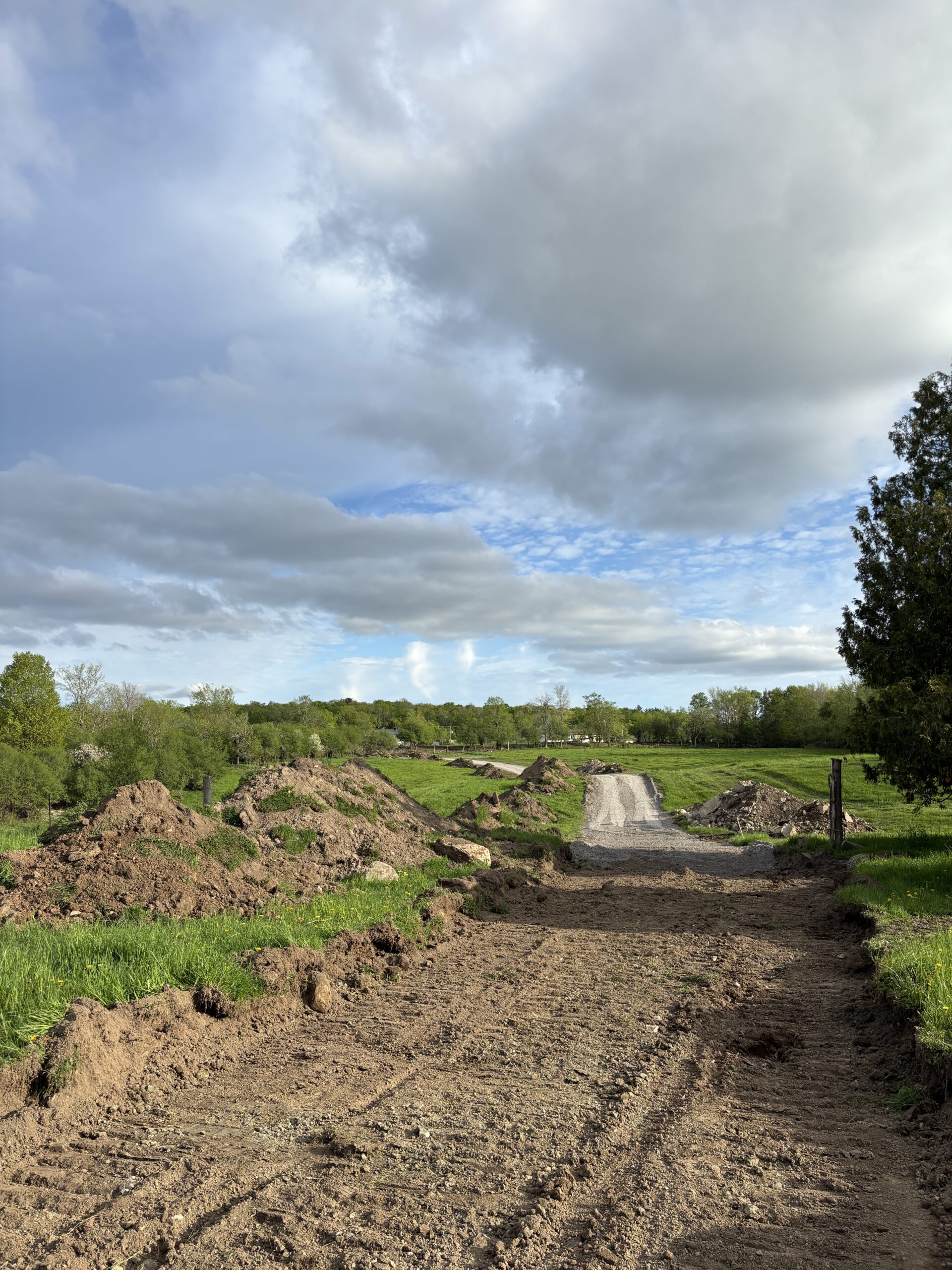
💡 Thinking of building a rural home?
Don’t underestimate the time, cost, and planning that goes into creating access to your site. The driveway may not be the most exciting part of your build—but it lays the groundwork for everything that comes after.
FAQ: Building a Rural Driveway for a Rural Home
How much does it cost to build a long gravel driveway?
Cost of a driveway varies based on location, materials, terrain, and length. For reference, our 700-metre gravel driveway cost 40 thousand dollars. Getting multiple quotes and planning for drainage can help control costs.
Do you need permits to build a driveway on rural land?
In many areas, yes. You may need a permit for the entrance from the main road (also called a culvert or entrance permit), especially if it crosses a ditch or public right-of-way. Always check with your local municipality. We did not need an additional permit because we already had an entrance from the main road with a short driveway on our property.
What type of gravel is best for a long driveway?
A mix of coarse base gravel (like 3-inch) topped with a finer layer (like ¾-inch crusher run or limestone screenings) offers stability, drainage, and a smoother finish.
How do you maintain a long rural driveway?
Routine grading, filling potholes, adding fresh gravel every few years, and clearing debris or snow are essential for keeping your driveway in good shape. Proper drainage is key to reducing maintenance.
How wide should a rural driveway be?
Most single-lane driveways are 10–12 feet wide. Ours is about 12-16 feet to allow room for delivery vehicles, construction equipment, and safe passing. We had the room for it, so we made it a little wider.
Is a long driveway worth the cost?
For us, yes. A long driveway offers privacy, peace, and a more secluded setting—all of which were priorities in building our forever home. It’s a significant investment, but one that adds lasting value and comfort.

Final Thoughts on Building a Rural Driveway
For us, this long gravel path is more than just access to our house. It’s the start of a dream fulfilled. Every metre of that driveway represents our commitment to building a quiet, intentional life for our family.
If you’re planning to build a home on acreage, don’t overlook the importance of your driveway. It might not be the most exciting line item in your budget, but it sets the tone for everything that follows—and it can make all the difference in how your home feels from the moment you arrive!
👉 Stay tuned — or subscribe so you don’t miss the next post: Building Our Home – Step One: Excavation, Slab Prep & Foundation Walls

Planning your own rural build? Leave a comment or follow our journey. More farmhouse updates coming soon!





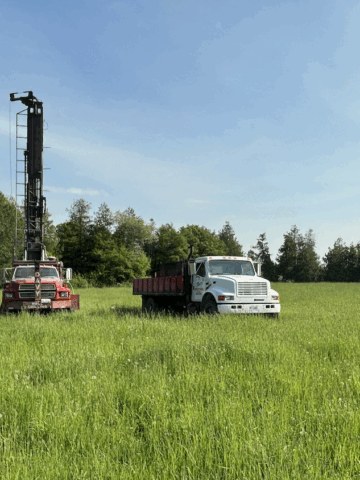

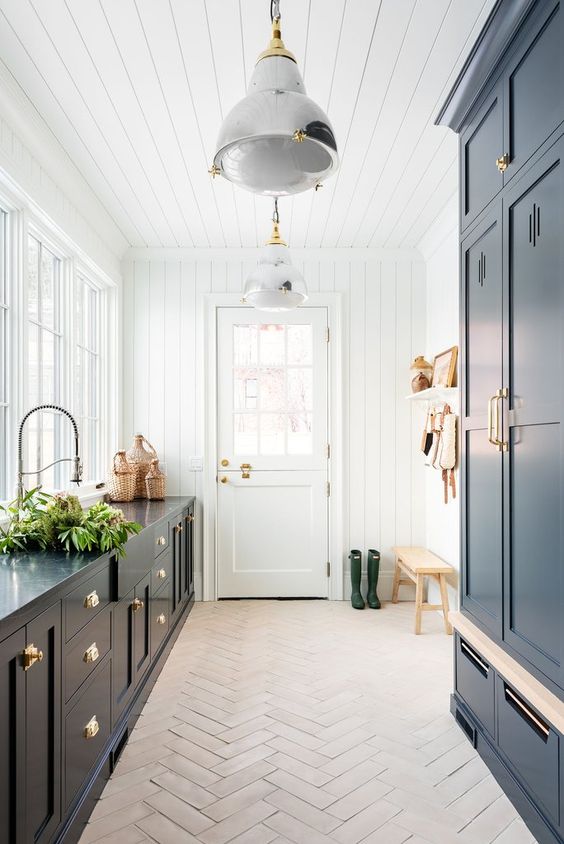
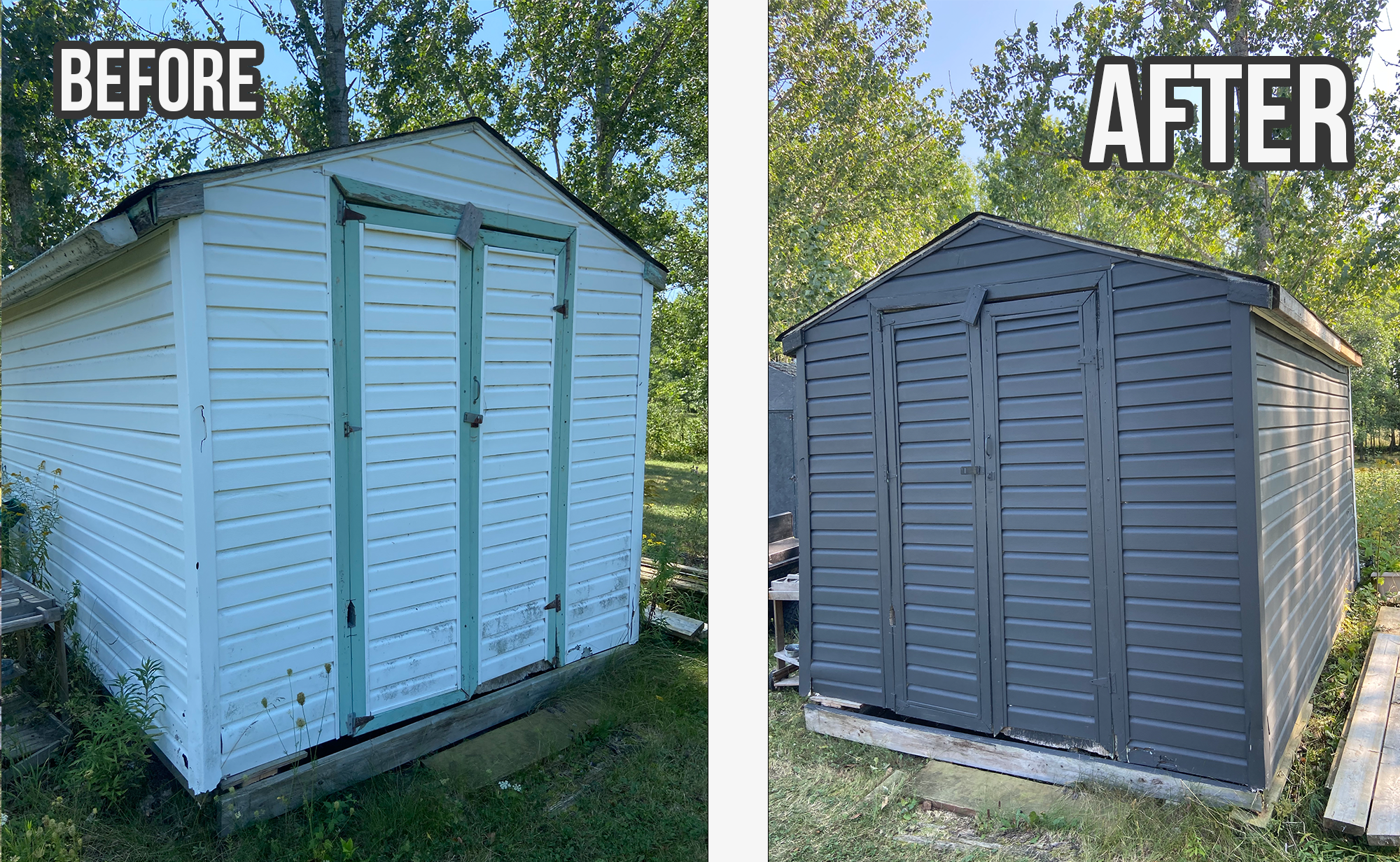
Leave a Reply